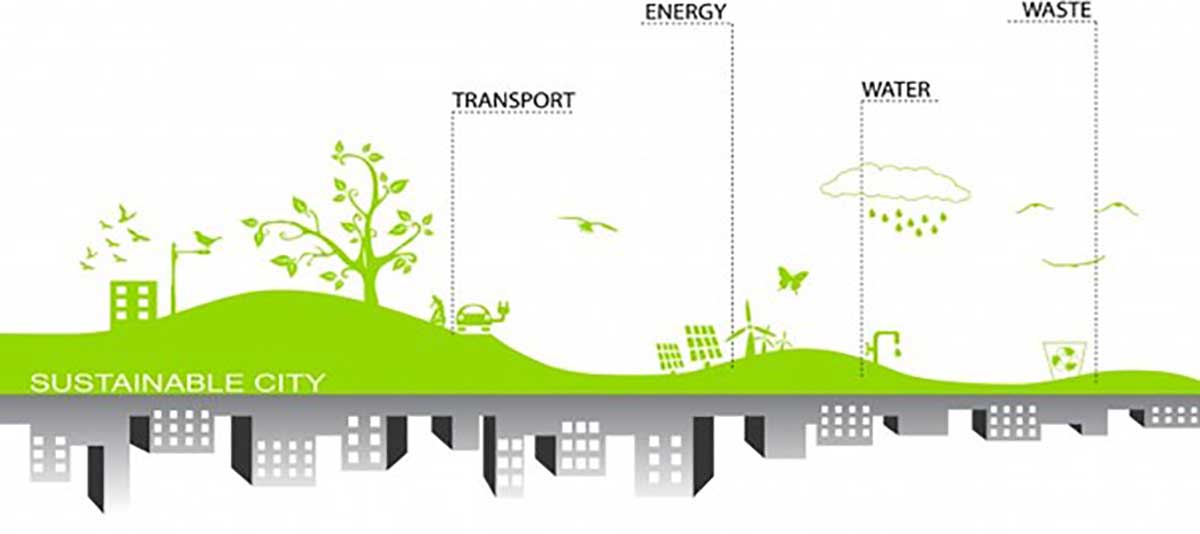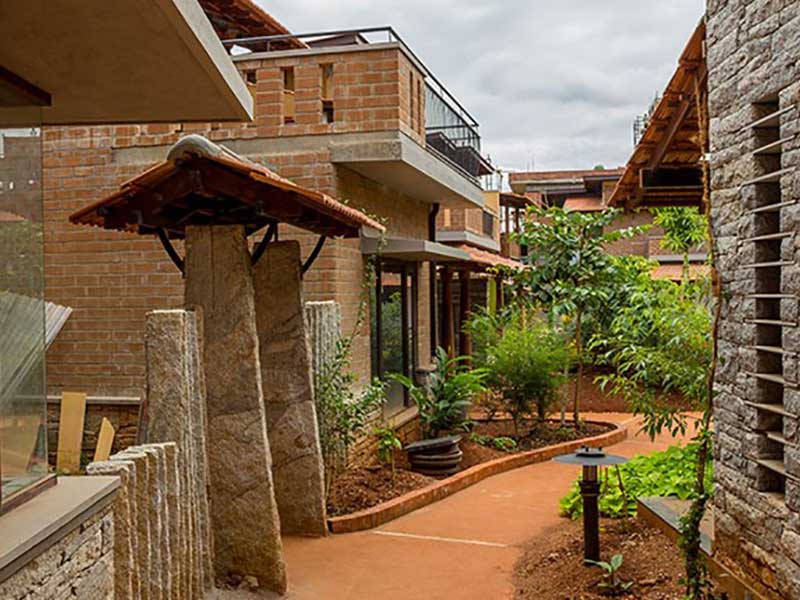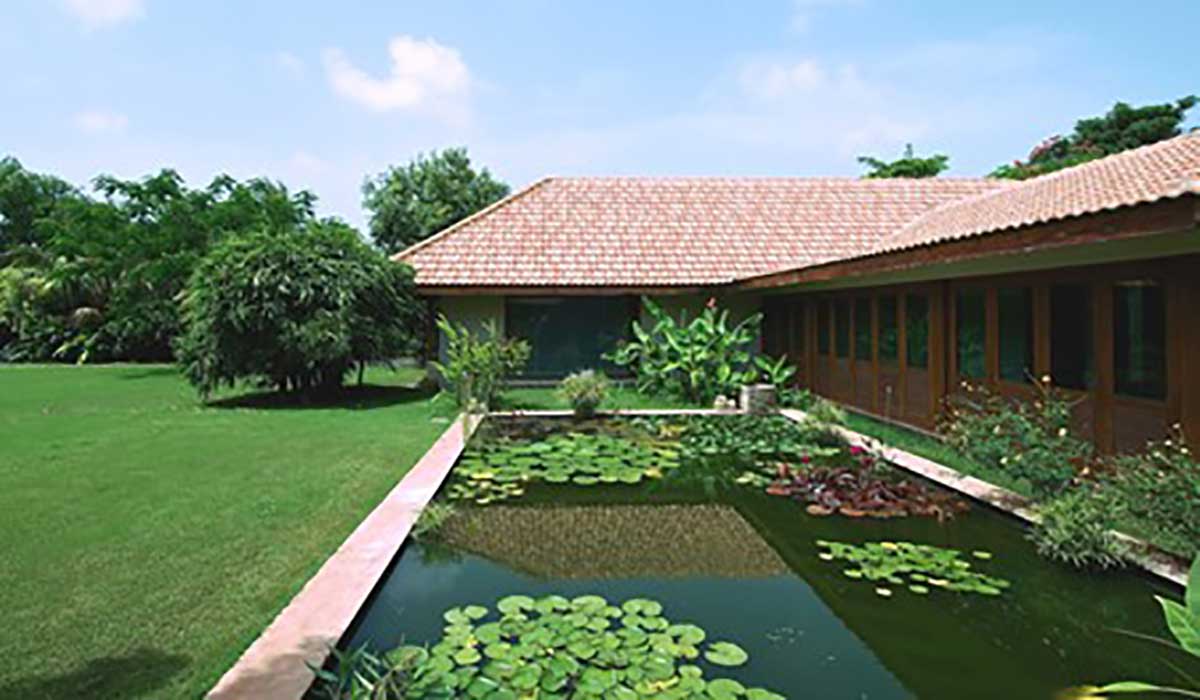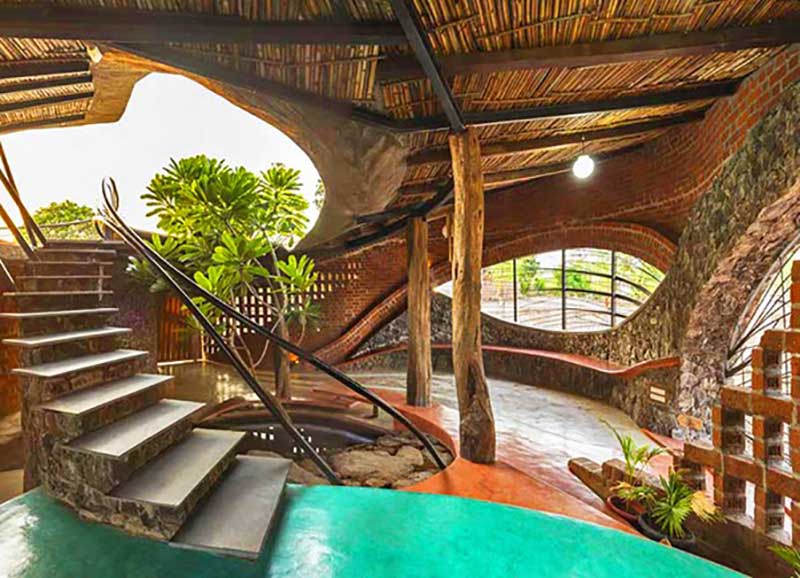
Every era depicts its own style of architecture - affecting people’s lifestyle as well as the culture of that place. Traditional architecture was the result of a concentration of people in a location as the population was unevenly distributed and was concentrated more in areas where water was available. Today, technology has simplified construction techniques and material technology - giving us the flexibility to design. But sometimes, there is an urge to follow our culture and we start imitating it, especially in this part of the sub-continent that has a 1000-year-old rich culture. But we need to understand that imitating any piece of architecture is not going to solve the problems of a modern India that requires new solutions, while keeping tradition alive. On the other hand, we cannot follow the western architectural style blindly and equate it with modernisation. It reminds me of a phrase by Prof. S.M. Akhtar, “Architecture can never be imitated”.
 Attaining Sustainability (source: www.iaacblog.com)
Attaining Sustainability (source: www.iaacblog.com)Every site has its own context, and we need to respect that. Cultural heritage is an irreplaceable part of a city, but no city can be conserved, irrespective of how valuable the city fabric is, as new functions and therefore new architecture will appear. What we need to preserve is our culture in the midst of our modern architecture.
Sustainability as an approach to holistic building design
 Green Construction in India (source: ecoideaz.com)
Green Construction in India (source: ecoideaz.com)By following the holistic principles of sustainable designing with eco-friendly materials we can provide a healing environment to the user, which will not only affect the physical, emotional, and mental state of the human body but also the spiritual state.
Sustainability can be achieved by managing the building from its construction stage to its maintenance, and up till its disposal, so simply placing solar panels on the roof, or taking a few other sustainability measures is not enough.
Today, we need to be in closer proximity with nature, just like the traditional buildings which were built in and around nature. However, we seem to be lost in the so-called perception of what urbanism is, ignoring the context the site offers.
 Creating a balance between the open and built spaces (source: adelto.co.uk)
Creating a balance between the open and built spaces (source: adelto.co.uk)Spirituality as an approach towards a holistic building design
 Curvaceous Brick House
Curvaceous Brick House“Nature is life and life is nature”. The worldwide ecological imbalance is the outcome of our destruction of nature. The desire for modernisation is leading us towards a robotic future. We must understand that if our built environment responds positively to nature, we will feel peaceful. To achieve this mental, physical, and spiritual harmony, architects need to take a holistic design approach – one that inculcates natural elements and materials – and which conserves the natural environment to the extent possible.















